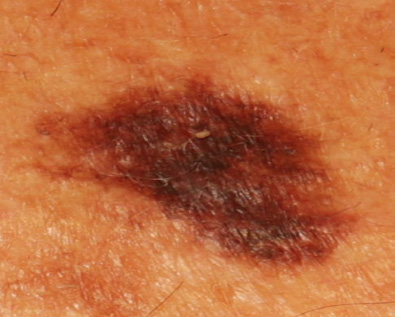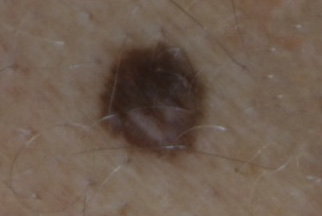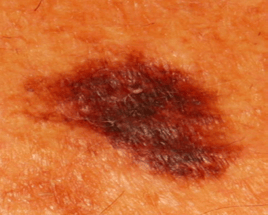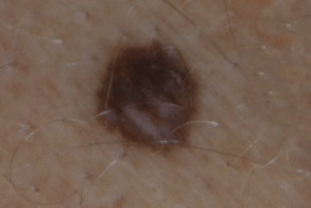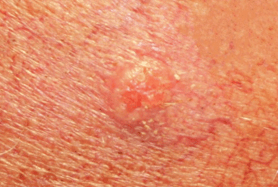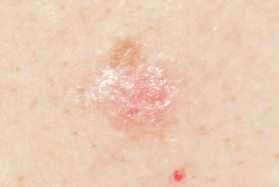Indicated Lesion Types and Performance
There are three common types of skin cancer and the DermaSensor device has been validated to detect these three cancer types. Melanomas, the most dangerous form of skin cancer, are commonly darkly pigmented lesions that are often evaluated using ABCDE characteristics with asymmetrical shapes, irregular borders and colors, larger diameter and are often changing over time. Highly atypical nevi can be considered abnormal lesions and since they sometimes become melanoma, these lesions should also be referred to dermatology and are grouped with the cancerous lesions. Squamous cell carcinomas arise from squamous skin cells and are commonly found on sun exposed skin. These cancers can appear as scaly and often tender patches or plaques. In more serious cases they can be raised nodules or tumors that will bleed or present with ulceration that does not heal. Basal cell carcinomas can look like many other lesions but often are shiny skin-colored bumps or red scaly areas. When neglected they can often look like large open sores that do not heal over time. These cancers also often occur on sun exposed skin.
|
Melanoma: often evaluated using ABCDE (asymmetry, border, color, diameter, evolving), e.g., a changing, irregularly shaped and pigmented lesion often of a larger size than a typical nevus. |
Highly Atypical Nevi: often have abnormal clinical features similar to melanoma and can become melanoma in future; these lesions should be referred to dermatology. |
|
Melanoma: often evaluated using ABCDE (asymmetry, border, color, diameter, evolving), e.g., a changing, irregularly shaped and pigmented lesion often of a larger size than a typical nevus. |
Highly Atypical Nevi: often have abnormal clinical features similar to melanoma and can become melanoma in future; these lesions should be referred to dermatology. |
|
Squamous Cell Carcinoma: often scaly and tender patches or plaques and are often raised nodules or tumors that bleed or ulcerate; most commonly found on sun exposed areas. |
Basal Cell Carcinoma: can look like many lesions, often a shiny skin colored bump or a red scaly rash-like area or when neglected a large open non-healing sore; occur most often on sun exposed areas. |
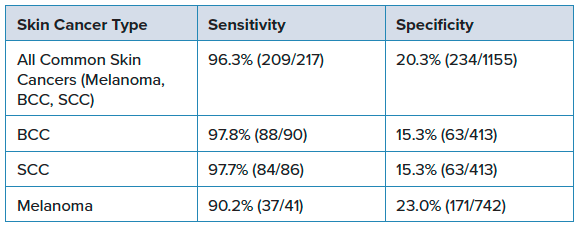
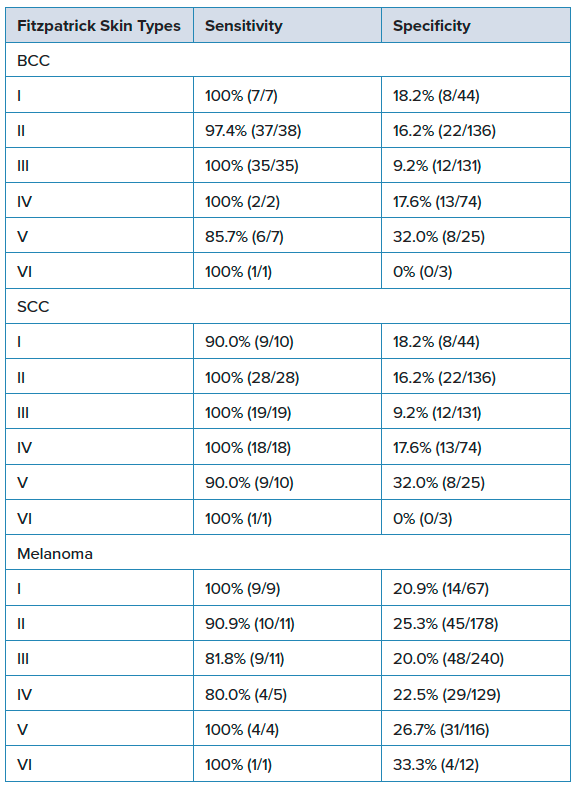
IFU 40-0001 v6

